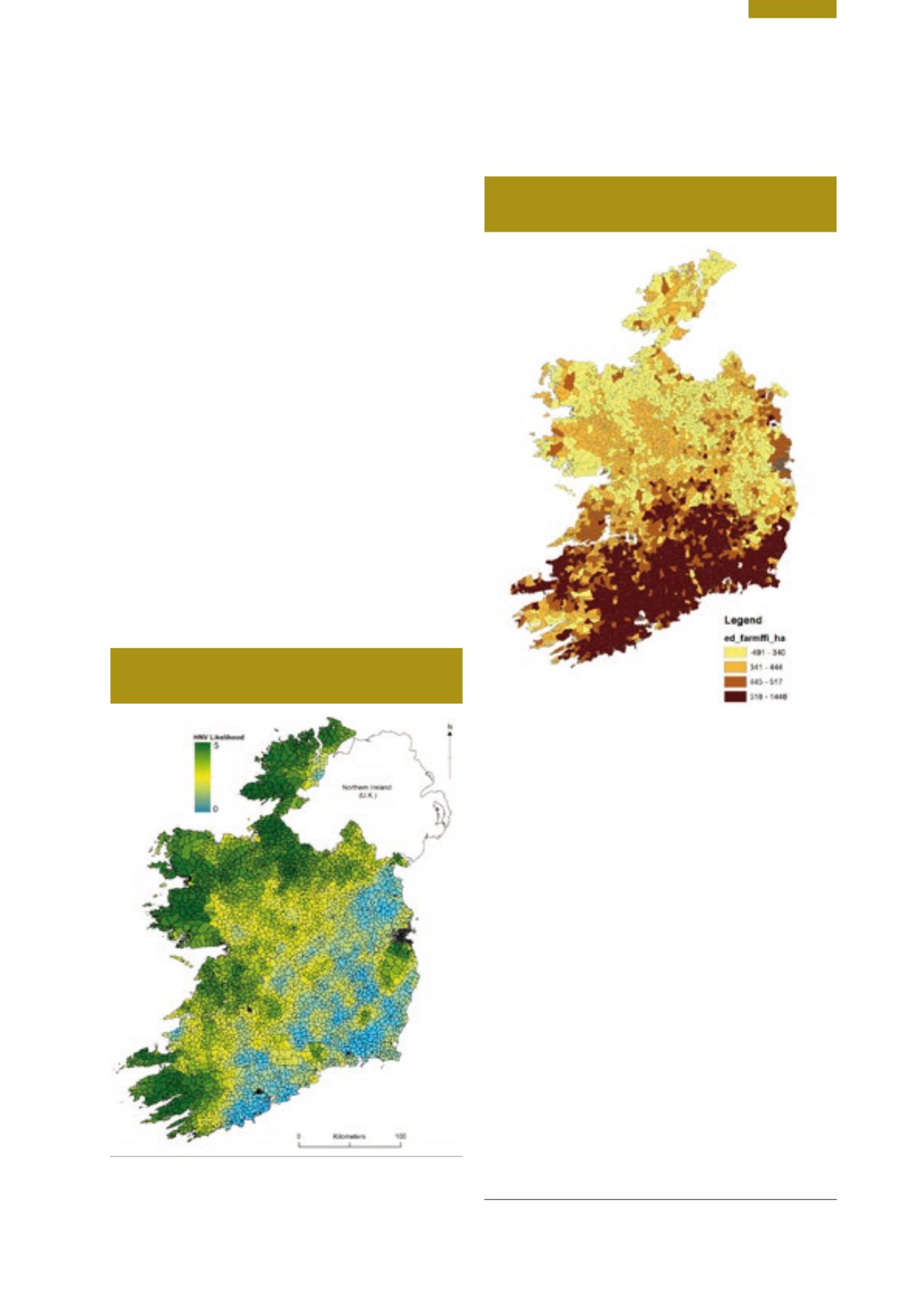

193
Chapter 12: Environment and Agriculture
threat for over 30% of them. The NPWS report concluded
that the main pressures to habitats included ecologically
unsuitable grazing levels such as under-grazing (or even
abandonment) as well as some continued overgrazing. The
report noted that grasslands, such as orchid-rich calcareous
grasslands, are threatened by either intensification of
farming or at the other extreme by insufficient grazing and
abandonment.
High-Nature-Value (HNV) farming has developed from the
growing recognition that the conservation of biodiversity
depends on the continuation of low-intensity farming
systems in both protected areas and other parts of the
countryside. The dominant feature of HNV farming is low-
intensity management, with a significant presence of semi-
natural vegetation and diversity of land cover, including
features such as ponds, hedges and woodland. Matin
et al.
(2016) produced a map of the likely distribution of
HNV farmland based on established European indicators
adapted for Ireland (Figure 12.5). This study identified a
substantial proportion of farmland as having HNV potential
and could inform targeted schemes to effectively support
and reward the significant number of farmers whose farms
deliver a wide range of ecosystem services particularly
along the western seaboard.
Figure 12.5
High Nature Value Farming Potential
(Source: Matin
et al.
, in press)
Figure 12.6
Modelled Family Farm Income per
Hectare (Source: O’Donoghue
et al.
, 2014)
Modelled Family Farm Income per hectare (O’Donoghue
et al.
, 2014) found that Connaught and the border region
had lower farm incomes than south of the country (Figure
12.6). When compared with farm income data it becomes
apparent that the potential for maintaining HNV farming
is greatest in areas with high proportions of economically
vulnerable farms while also being the areas at greatest
risk of losing HNV areas due to land abandonment or
overgrazing. This would suggest that there is potential
for incentivising the provision of other ecosystem
services in these areas in addition to production-oriented
ones. These benefits could be in water protection and
provision of habitat for biodiversity through bankside
habitat maintenance, farming for nature, and the native
woodland scheme. Demonstration initiatives (such as
the Burren,
7
Kerry
8
and Aran LIFE
9
projects) that target
specific local sustainability issues provide evidence of how
locally led community-based approaches can contribute
positively to overcoming the challenge of transforming
knowledge into effective actions in the agricultural sector.
Moreover, the national GLAS scheme contains many
initiatives that support biodiversity including protection
of low-input permanent pasture, hedgerow and small
orchard plantation which have important co-benefits with
7
www.burrenprogramme.com/8
www.kerrylife.ie/9
www.aranlife.ie/

















